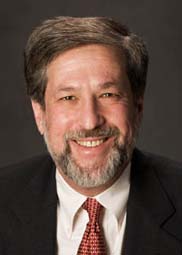Filed Under > Research/Publications
Learning is the Key
Without fostering understanding, physical education is just going through the motions
It’s Motivation 101: No one, whether child nor adult, will consistently exercise or be physically active unless doing so is enjoyable.
Yet as TC’s Stephen Silverman said in his lecture last March as the 2011 Alliance Scholar of the American Alliance of Physical Education, Health Recreation and Dance, it’s clear that, as a nation, we are failing to make good on that simple-sounding premise.
Elementary school students tend to have good attitudes about physical education and physical activity, Silverman said, but that those attitudes typically decline—particularly among girls—during middle and high school. It doesn’t help that many physical education programs push kids, regardless of skill level, into group activities or competitive athletics without giving them proper instruction on technique and skill acquisition. Silverman himself has found that the types of competitive activity in many schools—such as in-class scrimmages, in which the instructor stops the play to give players feedback; or full-size games, which don’t allow enough time for each student to practice skills at his or her own pace—are not as effective as individual instruction, with frequent feedback and adjustment of tasks.
The point isn’t that schools are missing the chance to develop future professional athletes, Silverman said in his lecture, but rather that all people are capable of learning physical education “in ways that make them enjoy it.”
In fact, fostering positive attitudes toward physical education is critical even among highly skilled students, Silverman said. “If students are skilled and fit, but leave physical education with poor attitudes, they may not use the skill or participate in regular physical activity.” Citing his own and other studies, he said that teaching methods that do not engender positive attitudes toward physical activity produce a “lack of learning” that students acutely sense and that robs them of motivation.
Ultimately, learning is the key to physical education, just as it is in education of any kind. “Just because teachers are teaching and children are moving does not mean that children are learning,” Silverman said in his speech. “Teaching without learning does not help students develop and grow and does not contribute to their overall education.”
Published Tuesday, Oct. 25, 2011
